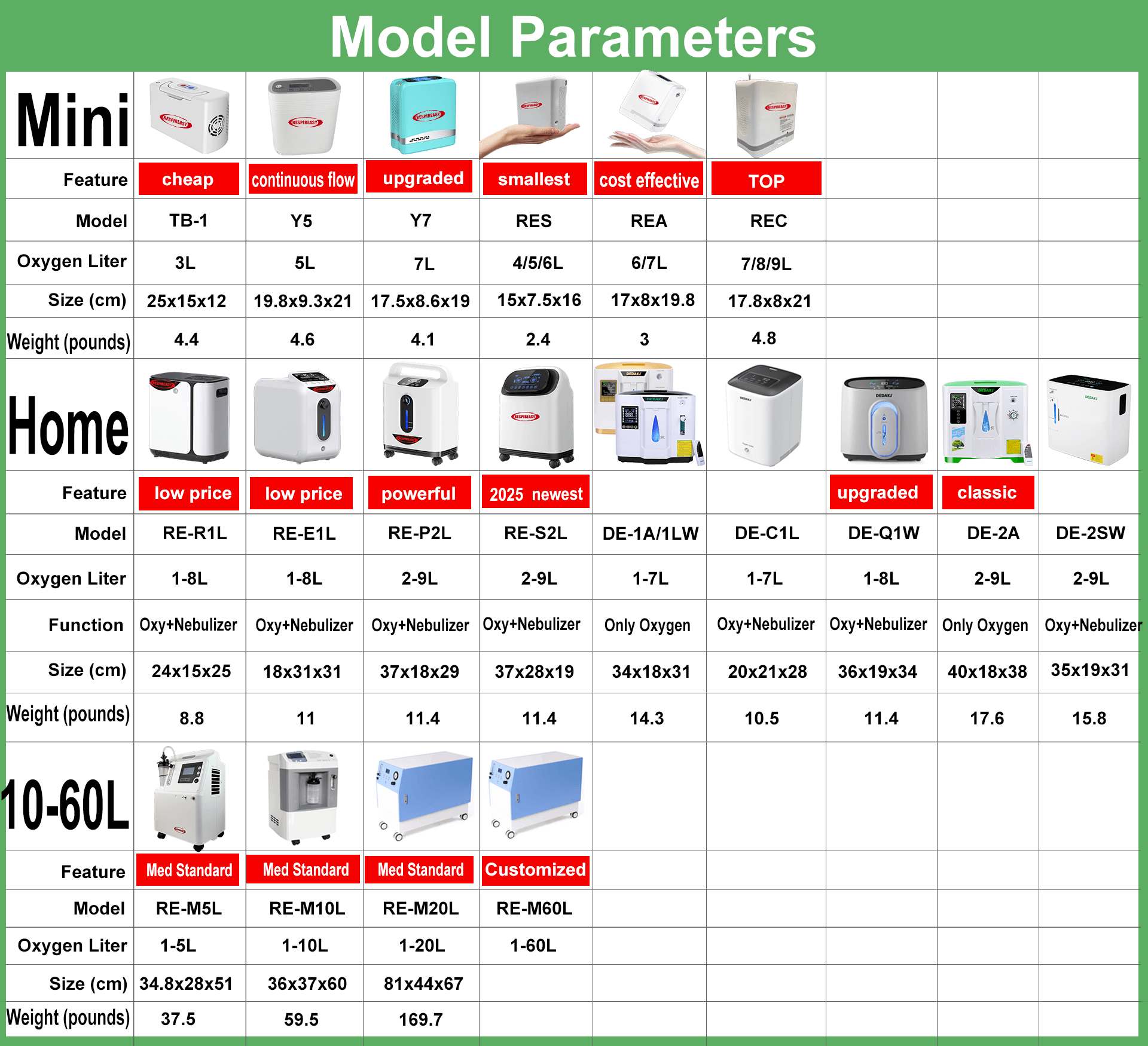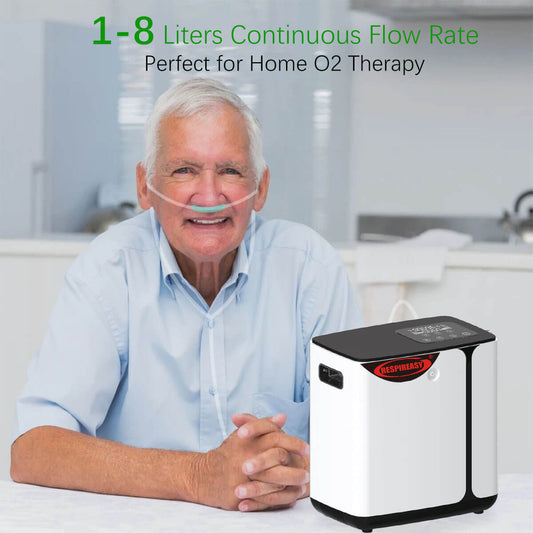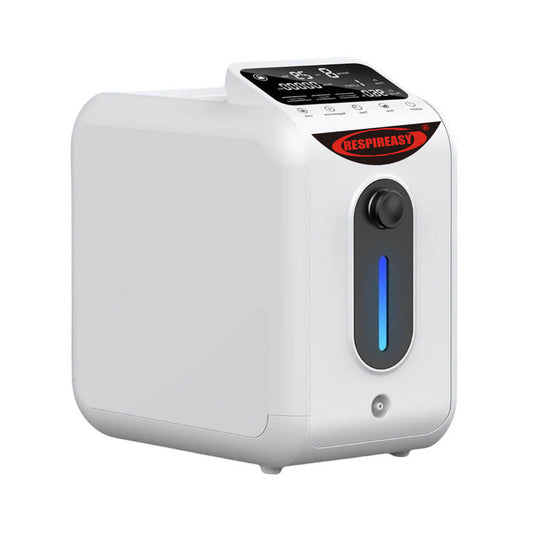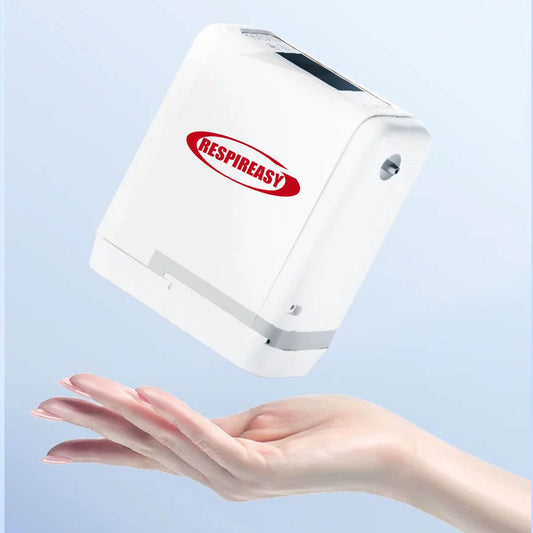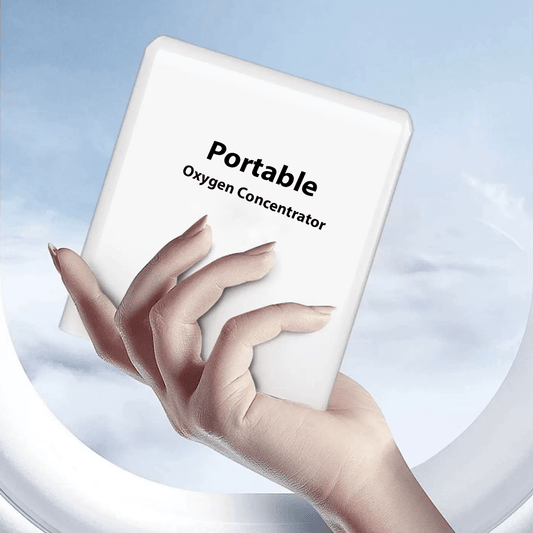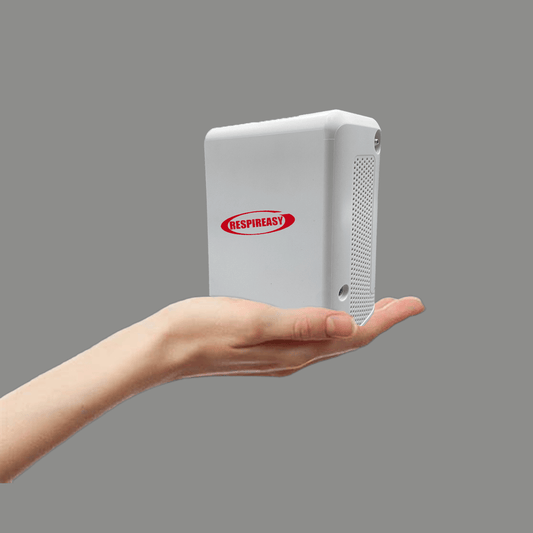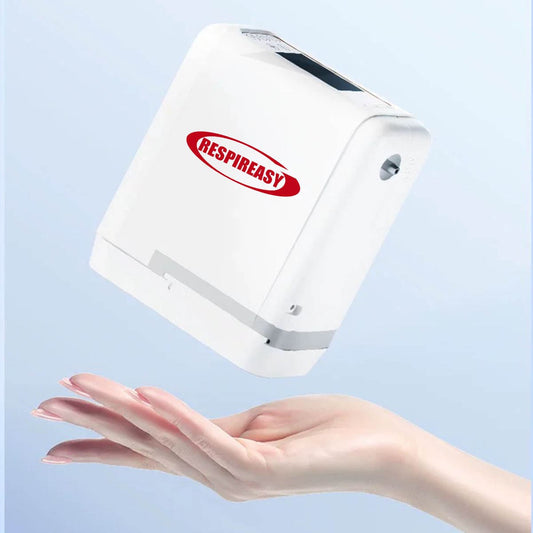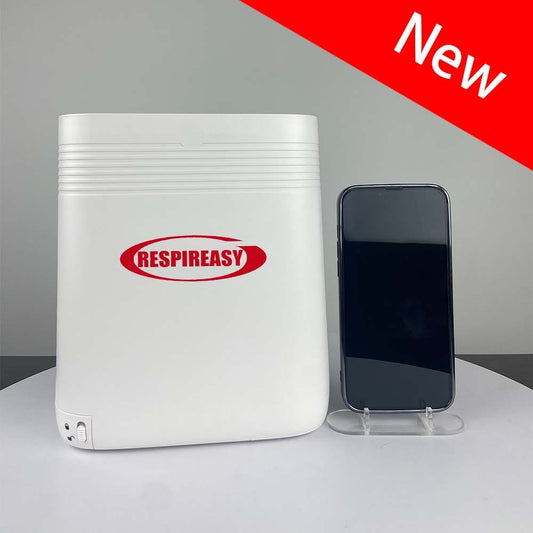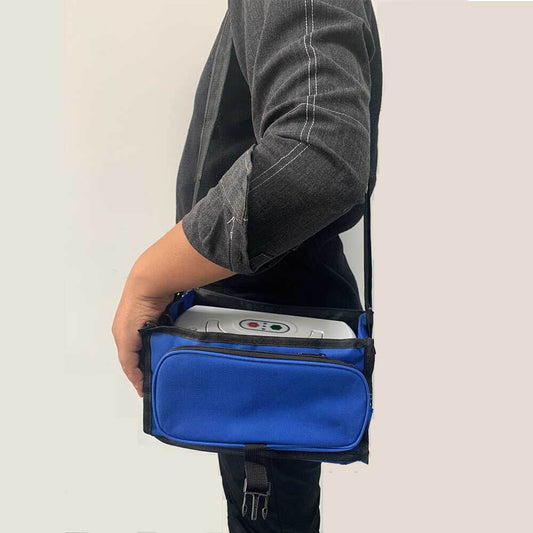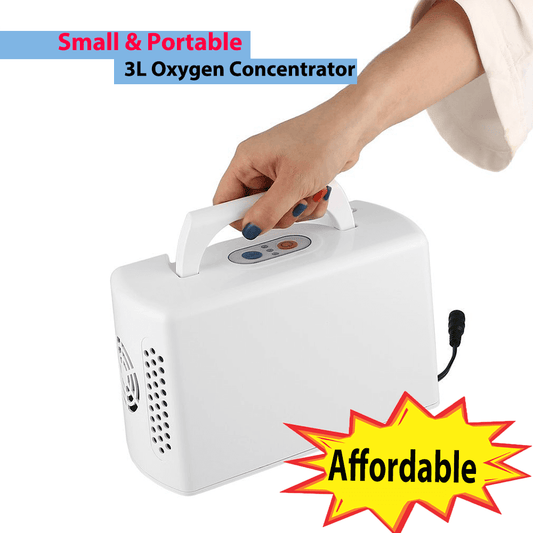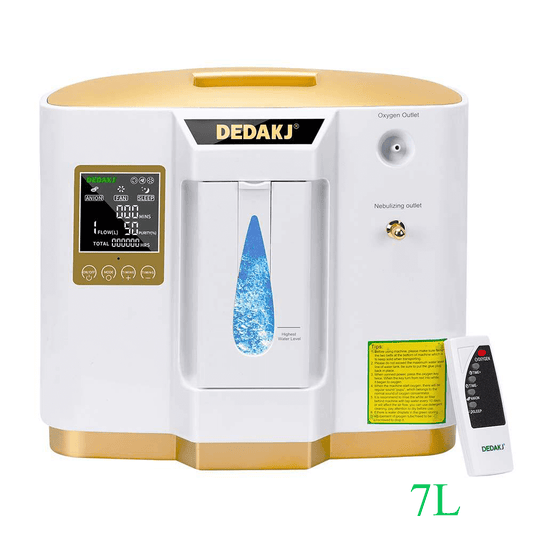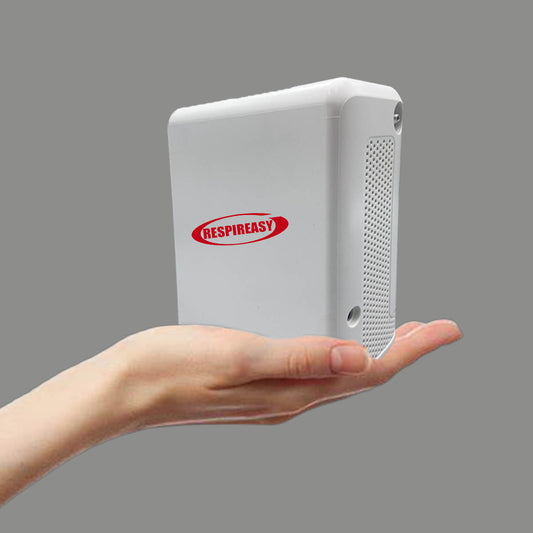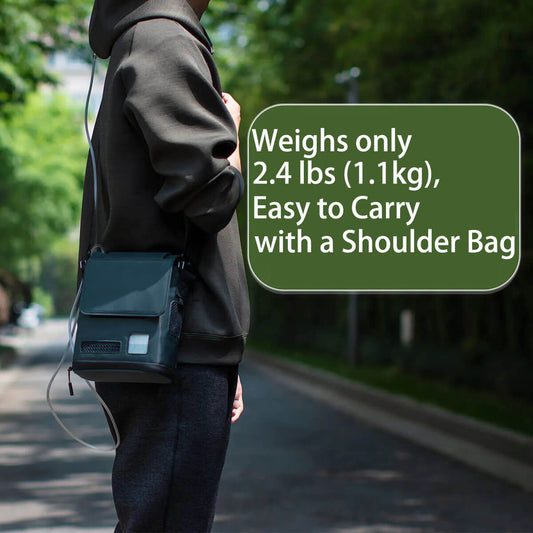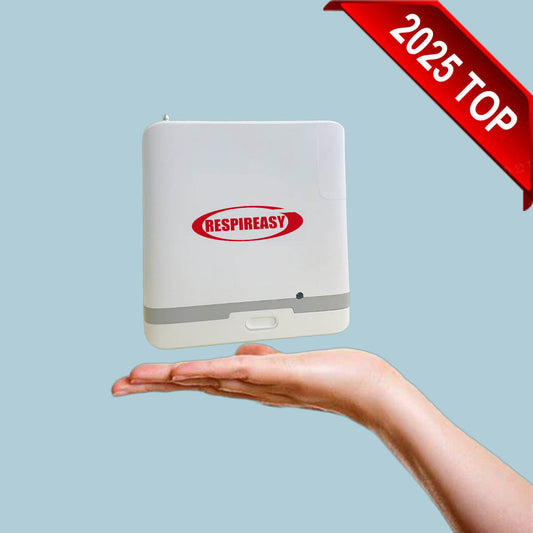2025 How to choose a home oxygen generator

Collection: DEDAKJ Mini Portable Oxygen Concentrator with Battery
Definition of oxygen generator specifications
(liters) X-liter oxygen generator means that the oxygen concentration is still maintained at 93%±3% at the maximum X-liter output. X≥3 can be used for medical purposes, which is called a medical oxygen generator (with a medical device registration certificate), otherwise it is a health oxygen generator. The maximum number of liters of the oxygen generator is backward compatible.
All specifications of oxygen generators are suitable for people.
1L oxygen generator is often used in health care. Pregnant women, students, office workers and other people who use their brains for a long time, to achieve health care effects such as enhancing immunity; 3L oxygen generators are often used in elderly health care, hypertension, cardiovascular and cerebrovascular hypoxic diseases, hyperglycemia, obesity, etc.; 5L oxygen generators are often used for cardiopulmonary functional diseases (chronic obstructive pulmonary disease, pulmonary heart disease); 8L oxygen generators are often used for special patients with high oxygen flow and long-term oxygen absorption.
The working principle of the oxygen generator is to use air separation technology to first compress the air with high density and reuse the different molecular sizes of each component in the air to separate it under molecular sieve adsorption. It is separated into oxygen and nitrogen, and then nitrogen in the air is separated from oxygen, and finally a high concentration of oxygen is obtained.
Compressors and molecular sieves are the core components of the oxygen generator. The more powerful the compressor and the finer the molecular sieve are the basis for improving the oxygen production capacity, which is roughly reflected in the volume, component material and process technology of the oxygen generator.
Supporting oxygen absorption tools Nasal catheter oxygen absorption is divided into unilateral and bilateral nasal catheter and nasal congestion. If you use nasal congestion or nasal catheter to absorb oxygen, you should shut up and breathe. Generally, bilateral nasal catheters are selected to absorb oxygen. Long-term unilateral nasal catheters are more irritating to the nasopharynx. It is more comfortable to put the nasal plug in the front nostril to absorb oxygen. It is light but easy to fall off. The mask absorbs oxygen, affects speech and eating, and presses on the face, so it can only be used for a short time.
With the use of equipment, the oxygen generator can solve the problem of inhalation oxygen concentration, but not the problem of inhalation. When carbon dioxide retention and other causes respiratory distress or sleep apnea syndrome, it can be used with a non-invasive ventilator. For sleep apnea syndrome, only a single-level ventilator with constant pressure is needed, while a double-level ventilator with two pressures is required for lung diseases. According to the conditions for judging hypoxemia, the family is equipped with a blood oximeter to obtain blood oxygen saturation to quickly understand the state of the oxygen-absorbing body.

Key points for the purchase of oxygen generator
1 When the budget is sufficient, you can choose an oxygen generator with oxygen concentration monitoring.
2 Choose an oxygen generator with a large enough compressor exhaust volume. The larger the compressor, the longer the service life, that is, the larger the volume of the model.
3 If continuous oxygen therapy is required, a good heat dissipation system is required to ensure continuous operation for 24 hours or even 365 days.
4 The greater the power of the compressor, the higher the noise. The industry standard stipulates that the noise value of the oxygen generator should be ≤60dB, and it is more comfortable to reach less than 45dB.
5 Give priority to the oxygen generator with functions such as large-screen display and voice prompts to reduce the difficulty of use.
6 Patients with non-fixed oxygenation positions also need to consider portability.
7 Based on your own actual needs, choose an oxygen generator that is higher than or equal to the maximum oxygen absorption flow rate.
8 If you need to use it on the plateau, you need to choose a larger liter oxygen generator appropriately.
Oxygen therapy for various diseases
1 Oxygen therapy in the stable period of chronic obstructive emphysema (COPD) When the arterial blood oxygen distribution pressure of COPD patients is less than 55 mm or the arterial blood oxygen saturation is less than 88%, or when hypoxemia occurs at night and during exercise, it is recommended to perform long-term oxygen therapy for more than 15 hours. Cover the sleep time. However, home oxygen therapy is not suitable when the condition is unstable. COPD oxygen therapy advocates low-flow oxygen absorption, the oxygen absorption flow rate is 0.5 to 3 liters/minute, and the oxygen absorption concentration is <35%, which should be adjusted according to the doctor's guidance.
2 Oxygen therapy for cardiovascular diseases. In order to avoid irreversible damage to the heart and brain caused by hypoxia, oxygen supplementation at the time of the premonition or at the time of the onset of the disease can effectively avoid the occurrence of complications.
3 Oxygen therapy for cerebrovascular diseases is similar to that of cardiovascular diseases in first aid. The treatment principle of cerebral ischemia is to dilate blood vessels and increase tissue oxygen supply. Those who have the conditions to absorb oxygen can supplement oxygen and absorb oxygen at a flow rate of 2 liters/minute until the symptoms are relieved, so as to speed up the correction of hypoxia symptoms. The increase in blood oxygen concentration can also reduce blood viscosity and dissolve small blood clots. From the day after the onset of the disease, oxygenation 1 to 2 times a day, 1 to 2 hours each time, for 2 to 3 weeks in a row, can play a role in preventing recurrence. Cerebral infarction is ischemic and hypoxia of the brain tissue in the infarcted area. Proper oxygen absorption can increase blood oxygen concentration, reduce blood viscosity and reduce brain tissue damage. For patients with acute cerebral infarction, the oxygen absorption flow rate is mostly 4 liters/minute. During the recovery period, patients can receive oxygen therapy at home for 1 to 2 hours each time and continuous treatment for two weeks, which can achieve better recovery results. Patients with cerebral vertigo can properly absorb oxygen, and increasing blood oxygen pressure and blood oxygen content can help relieve the hypoxia in the inner ear and gradually relieve the symptoms. You can absorb oxygen at home once a day for 1 to 2 hours each time, and the flow rate is 1 to 2 liters/minute.
4 Oxygen therapy for diabetes. Oxygen absorption in diabetic patients can promote vigorous aerobic metabolism, increase glucose consumption and reduce blood sugar. At the same time, increasing the production of adenosine triphosphate can promote the recovery of pancreatic islet function. The high oxygen saturation of hemoglobin in diabetic patients leads to a decrease in physical dissolved oxygen, resulting in a certain degree of tissue hypoxia. Oxygen therapy can increase physically dissolved oxygen. Patients with mild diabetes do not need oxygen therapy without obvious self-conscious symptoms; patients with moderate diabetes should absorb oxygen, with a flow rate of 4 to 6 liters/minute, once a day, for 2 hours each time, for 3 to 4 consecutive weeks, generally achieve good therapeutic effects; critically ill patients should be treated in the hospital according to the doctor's requirements, and the number of oxygen absorption should increase.
5 Oxygen therapy for cervical spondylosis Cervical spondylosis is accompanied by obstruction of blood supply to the vertebral artery, which causes hypoxia in the brain tissue, which can be improved by oxygen absorption.
6 Oxygen therapy for intrauterine distress of pregnant women and fetus Fetal intrauterine distress refers to the lack of oxygen in the mother's body, which can be improved by oxygen absorption.
7 Oxygen therapy for cerebral hemorrhage. Those who have the conditions can absorb 3-5 liters/minute of oxygen, which can moderately relieve cerebral hypoxia.
8 Oxygen therapy for acute myocardial infarction. If you have the conditions, you can absorb 3-5 liters/minute of oxygen, which can moderately relieve hypoxia caused by myocardial cell apoptosis.
9 Oxygen therapy for asthma attacks. Those who have the conditions can absorb 3 liters/minute of oxygen to relieve hypoxia symptoms. Note: Risks and side effects of oxygen therapy: Unsuitable oxygen therapy may cause dry respiratory tract, respiratory depression, oxygen poisoning, etc. Therefore, it should be carried out under the guidance of a professional doctor, reasonably select oxygen absorption time, control oxygen flow, and pay attention to oxygen humidification to ensure the safety and effectiveness of treatment.
Summary
As an important equipment for modern health care, the purchase, use and maintenance of home oxygen generators require a scientific and rigorous attitude. Through reasonable equipment selection, combined with personal health status and doctor's advice, it can significantly improve the quality of life of patients with hypoxic disease and reduce the occurrence of complications. At the same time, understanding the working principle, clinical parameters and equipment of the oxygen generator can better give full play to the therapeutic effect of the oxygen generator. However, oxygen therapy is not carried out at will. It must reasonably control the oxygen absorption time, flow rate and concentration under professional guidance to avoid potential risks and side effects. In a word, scientific use of oxygen and healthy life are the principles that every patient and his family who needs home oxygen therapy should follow.

TOP oxygen concentrator supplier,reliable product and service
DEDAKJ oxygen concentrator manufacturer provides various models of 1-9L home oxygen concentrators, up to 20LPM medical oxygen concentrators as well as the 2 lbs lightweight portable oxygen concentrator for traveling.
This is top-rated DEDAKJ oxygen concentrator supplier, providing both DEDAKJ 10- 20 liter medical oxygen concentrators and 1-9 liters home oxygen breathing machines, and DEDAKJ oxygen accessories parts.
For more information on oxygen concentrators, please feel free to consult us.
And you are we welcome to place the order in our official store directly.
We are operating the USA, Europe, Mexico and UK local warehouses.
Usually you can receive the parcel within 3-6 days, very fast shipping time.
More important, as the honorable oxygen concentrator supplier, we can offer 1 year quality warranty to our customers!



























